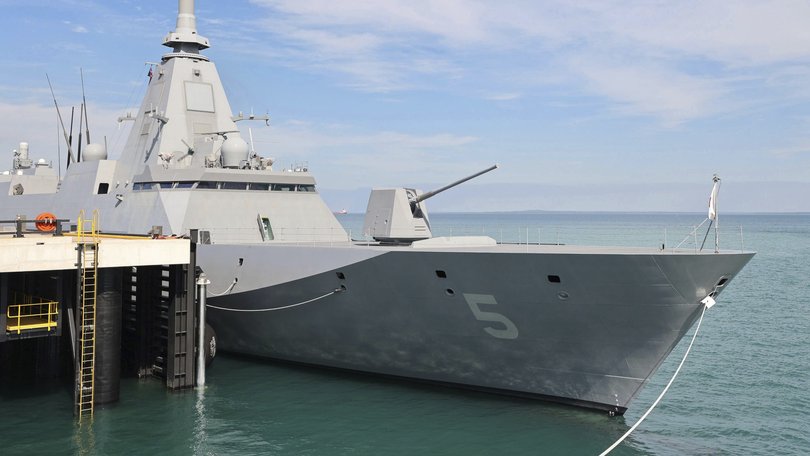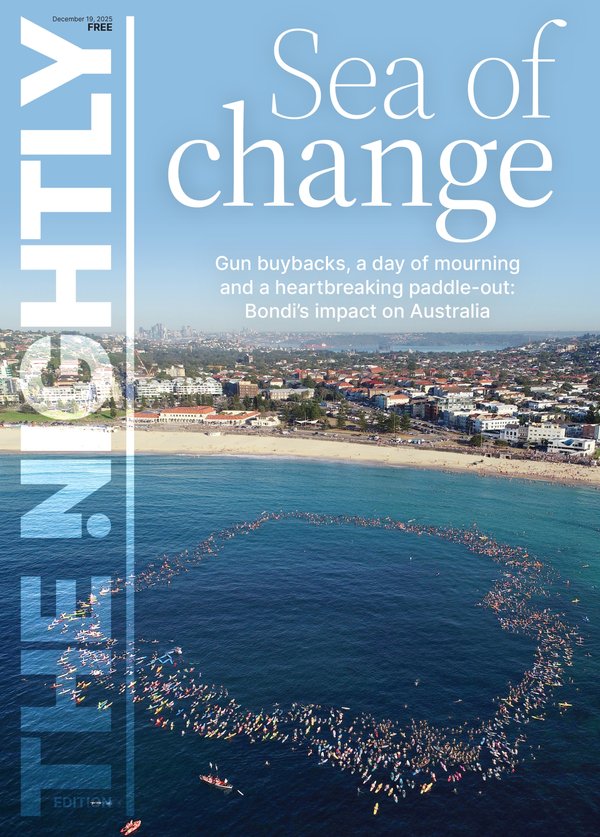EDITORIAL: As China threat rises, Japan partnership makes sense

Bigger, stealthier, and more lethal.
Mitsubishi Heavy Industries’ Mogami frigate is a serious piece of kit.
And crucially, it’s already in the water and in service for the Japanese.
Sign up to The Nightly's newsletters.
Get the first look at the digital newspaper, curated daily stories and breaking headlines delivered to your inbox.
By continuing you agree to our Terms and Privacy Policy.The rival bid to fulfil Australia’s tender for a new fleet of warships, from German defence manufacturer ThyssenKrupp Marine Systems, didn’t stand a chance.
With a full load displacement of 6200 tonnes, the Japanese ship is far larger than the 3700t TKMS Meko. Despite its larger size, the Mogami also needs a smaller crew, and can stay at sea far longer than its rival.
It’s also expected to have a longer operational life, at 40 years, in comparison to 30 for the Meko.
It makes sense to increase the interoperability of the Australian and Japanese navies
In terms of firepower, the Meko is soundly outgunned, with double the number of missile launch cells.
In every respect — other than price — the Mogami is the superior product.
That price is $10 billion over 10 years, for a fleet of up to 11 war ships.
The first, to be built in Japan, is expected to be ready for service by 2029. By defence procurement standards, that is a delivery speed of which Jeff Bezos would be proud.
It’s a feat which is made possible by the fact that the upgraded version of the ship Australia has ordered is already in production for the Japanese navy. Japan has pledged to prioritise Australia’s delivery over its own, meaning there’s a good chance that this project will achieve the near-impossible: fulfilment on time and on budget.
The second and third ships will also be built in Japan before production of up to eight more frigates shifts to WA’s Henderson shipbuilding precinct where they are to be built by Austal.
So why the urgency to get such a heavy bit of gear in the water ASAP?
According to Defence Minister Richard Marles, the new frigates will “help secure our maritime trade routes and our northern approaches as part of a larger and more lethal naval surface combatant fleet”.
Read: counter growing aggression from China.
That’s a goal Japan has a strong strategic interest in also. China is this week conducting joint naval drills with Russia off the coast of the Russian port city of Vladivostok and just a few hundred kilometres from Japan.
It makes sense to increase the interoperability of the Australian and Japanese navies.
Mr Marles said as much, though without specifically naming the China threat.
“There is no country in the world with whom we have a greater strategic alignment (than Japan), and that is being reflected in a really blossoming defence relationship,” he said.
It is notable too, that Wednesday marks 80 years since the bombing of Hiroshima which brought WWII to a tragic end. It is remarkable that some of the survivors of that terrible event are alive today to see the transformation of the relationship between their nation and ours, from bitter enemies to steadfast partners.
As seemingly intractable wars around the world drag on, consuming generation after generation, it is a reminder that peace is possible.
